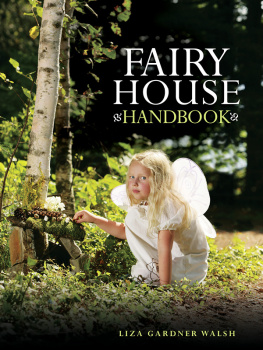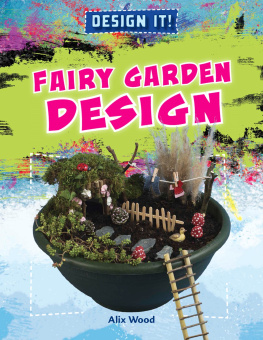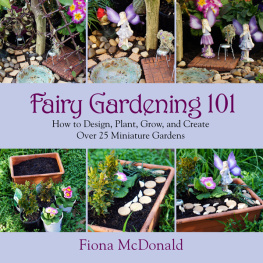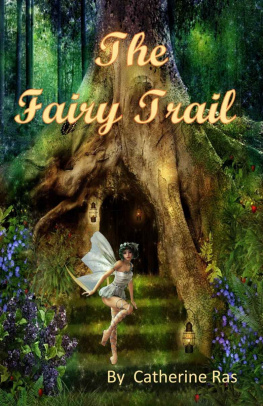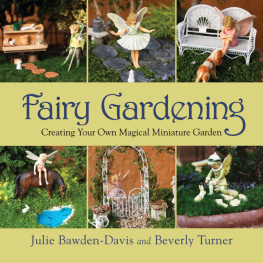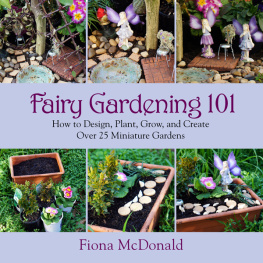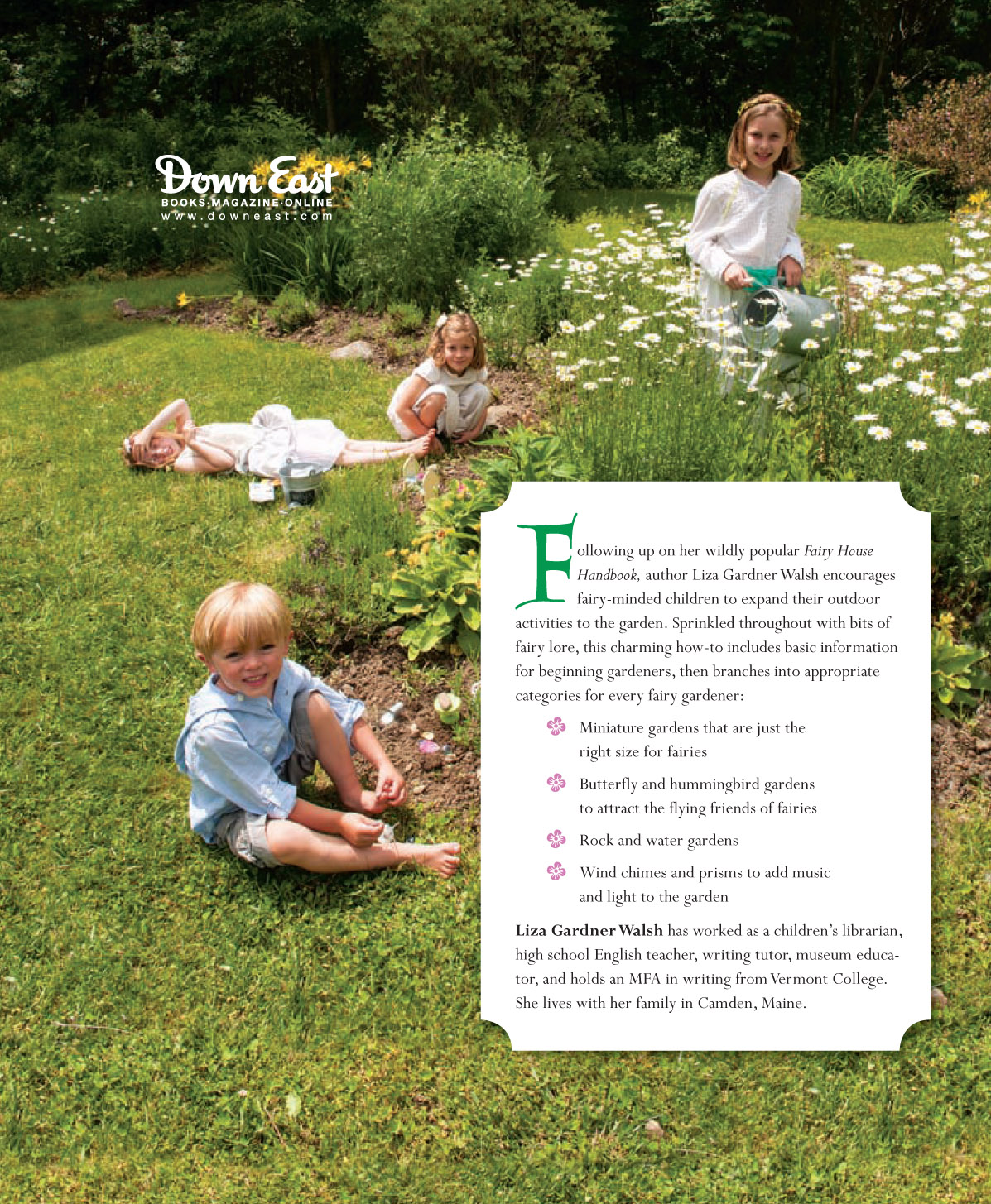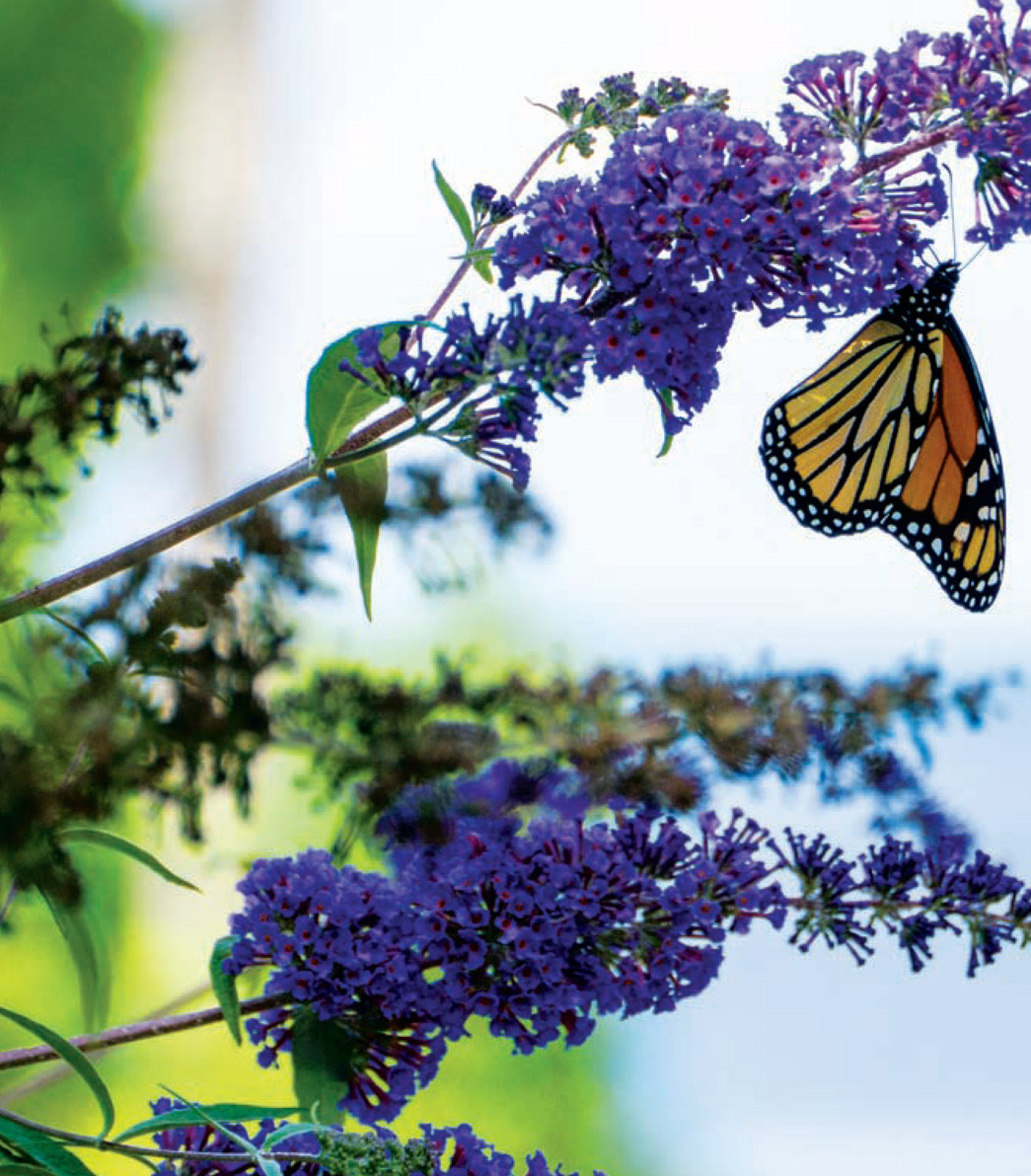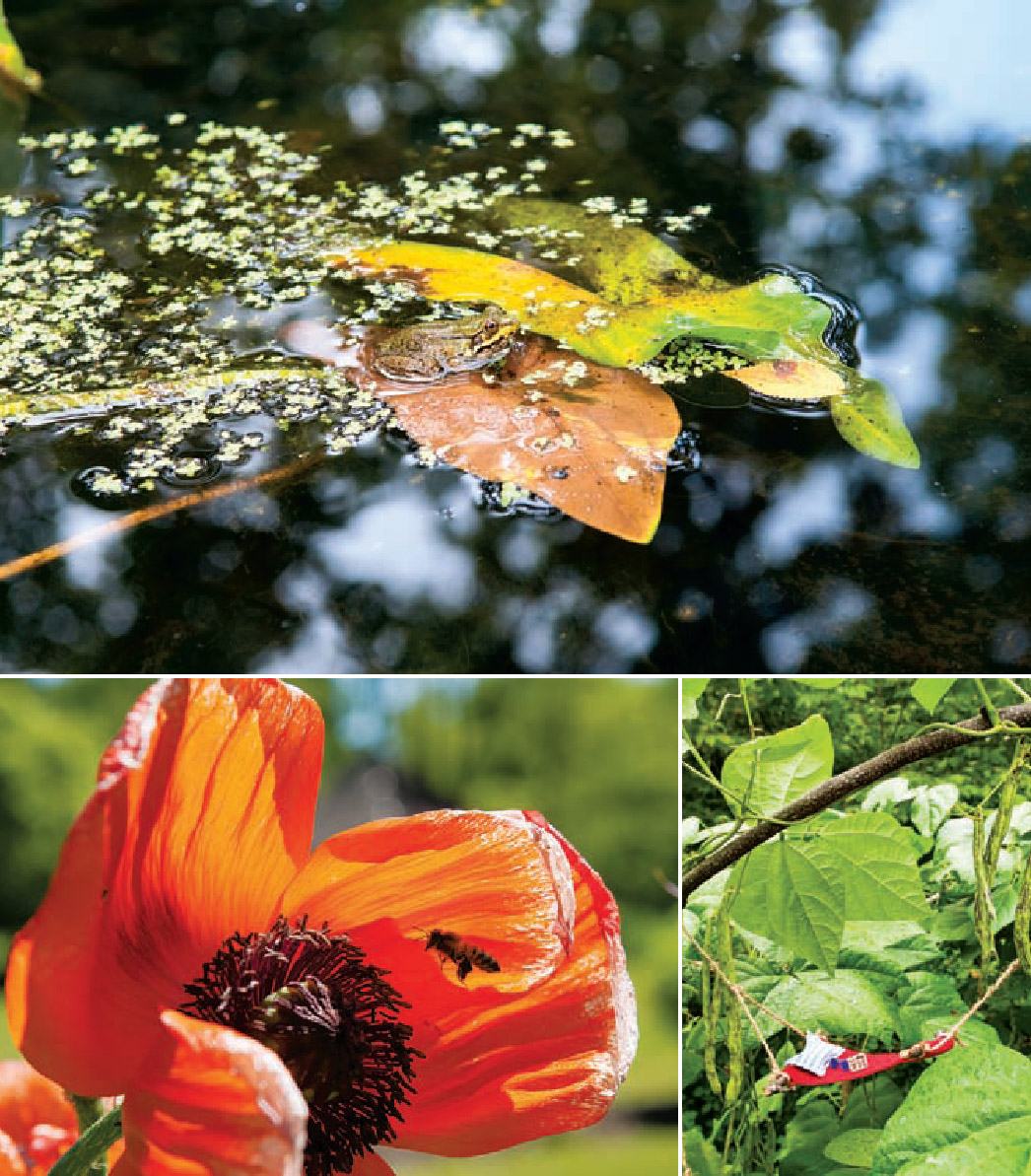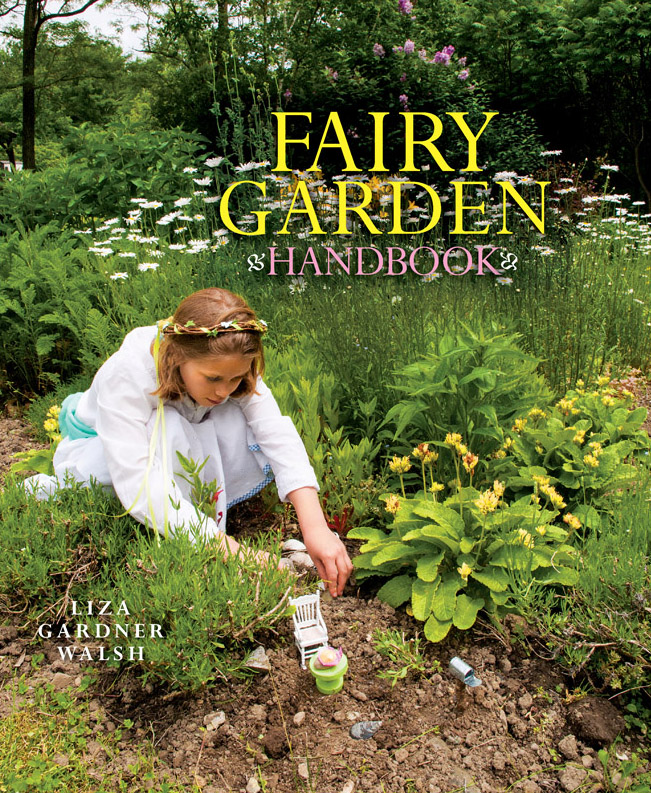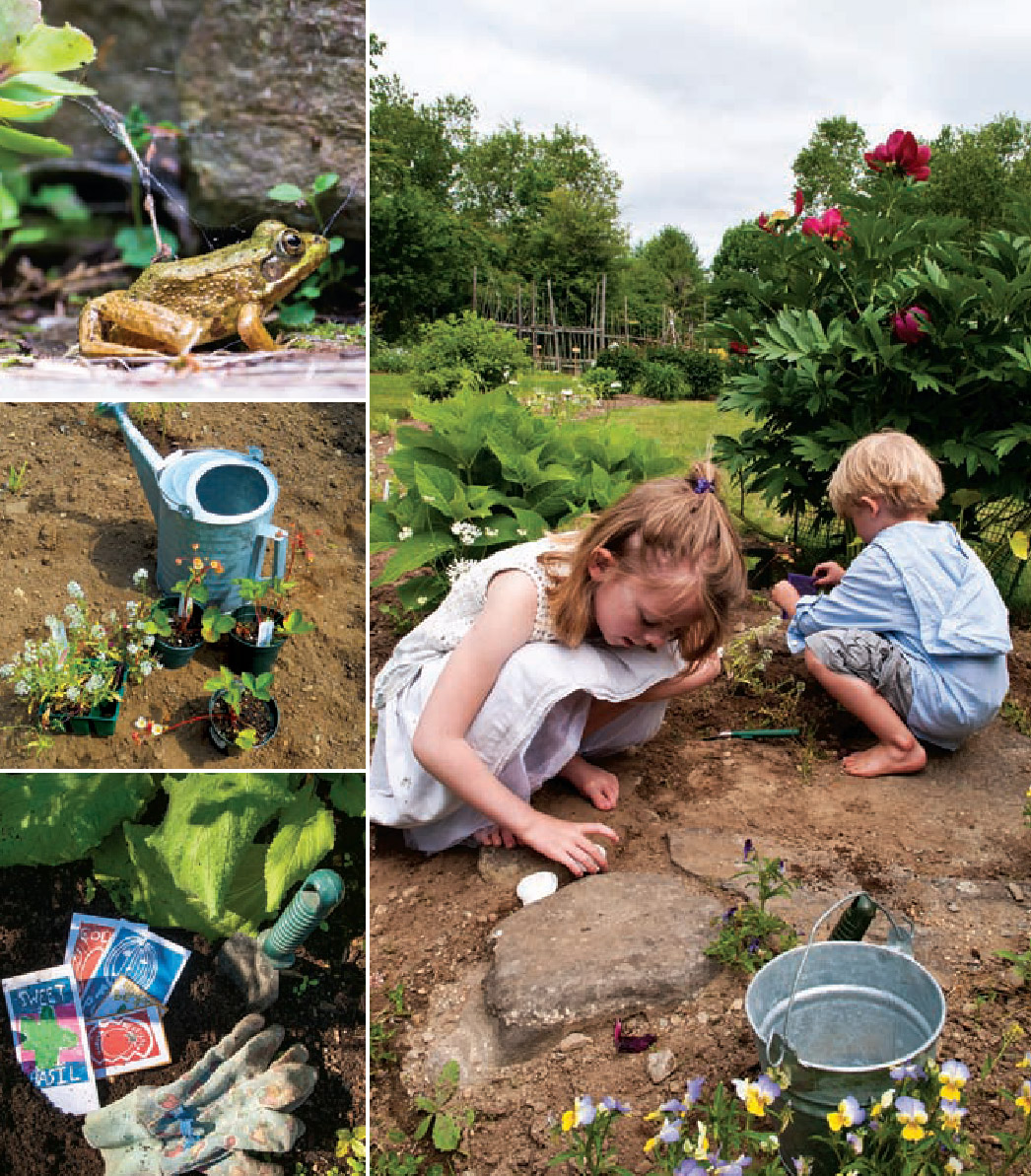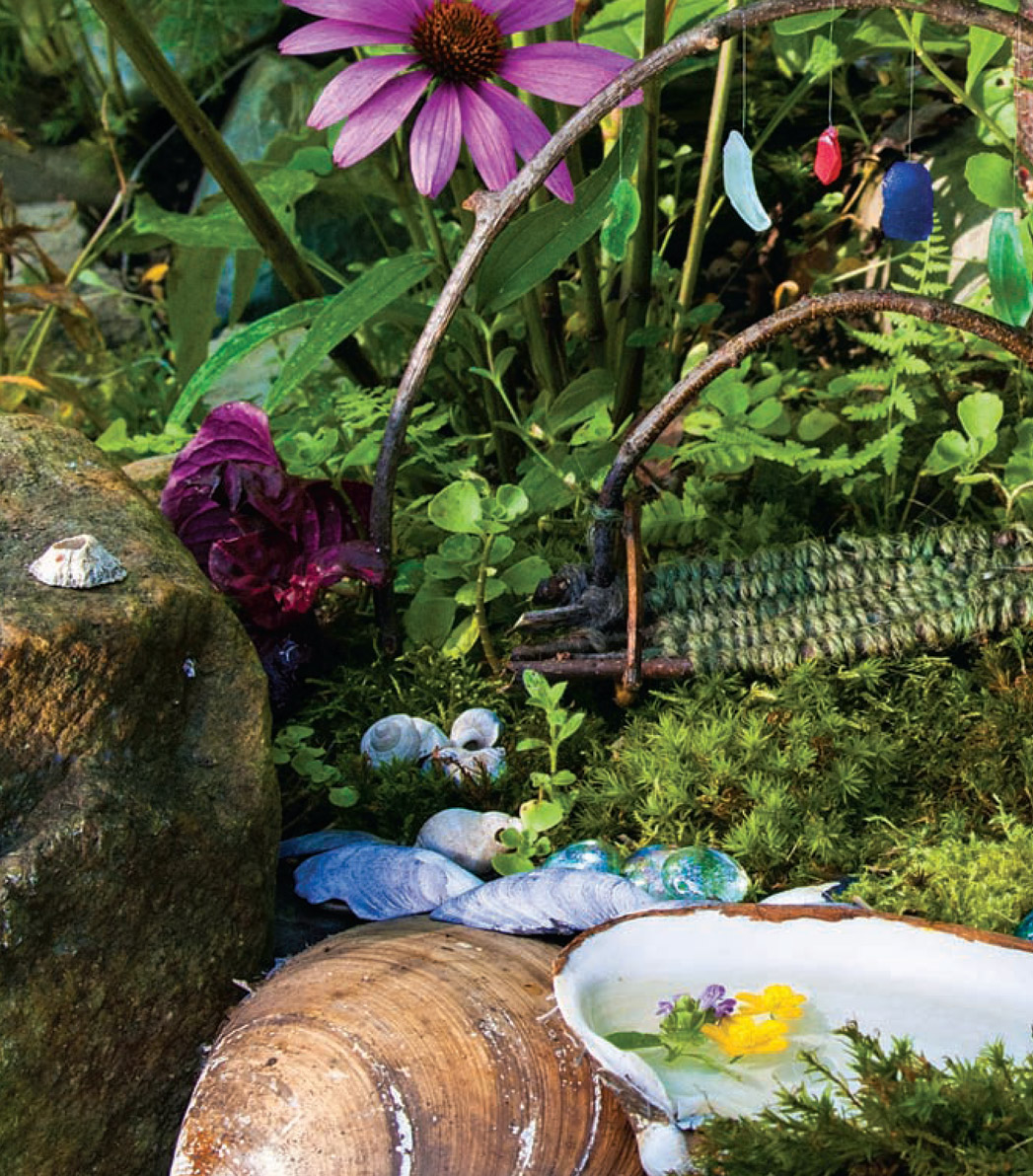
Copyright 2013 by Liza Gardner Walsh
Photographs copyright 2013 by Jennifer Smith-Mayo, except:
Andrew Lin, p. 24, Anemone Projectors, p. 41, Charles J. Sharp, p. 68, Christian Bauer, p.24, Cliffords Photography, p.71, E. Bettini/iStock, p. 52, George Hanf/iStock, p. 55, J.J. Harrison, p. 50, John ONeill, p. 41, Liza Gardner Walsh, p. 32, 34, 35, 43, 55, 63, 68, 73, Lynda Chilton, p. 10, 12, 14, 15, 16, 42, 48, Steve Byland/Fotolia, p. 72, Steve Byland/iStock, p. 52
All rights reserved
ISBN 978-1-60893-214-6
Design by Lynda Chilton
Printed in China
5 4 3 2 1
Distributed to the trade by National Book Network
Library of Congress Cataloging-in-Publication Data:
Walsh, Liza Gardner.
Fairy garden handbook / by Liza Gardner Walsh. -- 1st ed.
p. cm.
ISBN 978-1-60893-214-6 (trade hardcover : alk. paper)
1. Gardens, Miniature. 2. Gardening for children. 3. Miniature decorative design. 4. Garden ornaments and furniture. 5. Nature craft. I. Title.
SB433.5W353 2013
635.083--dc23
2012043271
Introduction
Garden fairies come at dawn. Bless the flowers and then theyre gone.
Welcome to the garden a place where a seed as small as a grain of sand transforms into a dazzling flower. Wherever such magic exists, you can bet fairies will be near. People say that when a seed sprouts, a fairy baby is born. In fact, theres an entire fleet of fairies devoted solely to flowers. Mary Cicely Barker, the flower fairy godmother, reports the following about flower fairies:
A flower fairys job is to look after her plant, tending leaves and trimming flowers. A flower fairy is 24 inches tall, and has a pair of delicate wings. She dresses in the leaves and flowers from her plant to help her stay hidden. A flower fairy is not at all fussy about where she lives: hanging baskets, window boxes, a tiny crack in a crumbling wall, or between the pavement stones where weeds and mosses grow any of these places might be home to a flower fairy. Since almost everyone has a potted plant, or can see a patch of grass or treetops from their window, this means that almost everyone is close to a flower fairy even if they dont realize it at the time. (From My Garden of Flower Fairies )
Perhaps you have already seen a fairy or made multiple houses in the woods for them, now is your chance to make them a garden. You may ask, what is fairy gardening, and that is a good question. Fairy gardening is simply gardening with the fairies in mind. For example, planting flowers that fairies might use for clothing or to bring to the fairy queen on the first of May. Or you might make a tiny trellis for a miniature landscape or a bench for a mossy container garden. There are many types of fairy gardens and many possibilities for the fairy gardener due to the vast number of plants available. There are fairy gardens that also attract hummingbirds and butterflies, friends of the fairies, or gardens filled with wonderful scents that will delight a fairys sense of smell. A fairy garden can be grown in your yard or planted in containers, such as wheelbarrows, bathtubs, baskets, or plain old pots.
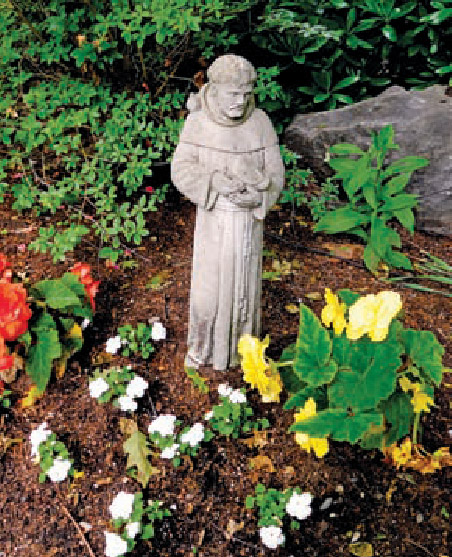
When building a fairy house, the most important rule is to use only natural materials. To bring a bunch of man-made items into the woods is basically littering. Since a fairy garden is either in a container or in a cultivated garden, you are allowed to bring on the shimmer, the sparkle, the tiny watering cans. But now that you have this freedom, dont go crazy. Fairies still prefer natural materials, even in a garden. Always think whether a fairy would really appreciate that extra marble or if it just makes the garden look too cluttered. The most important rule as you begin your entry into the magical world of fairy gardening is to never use any chemical fertilizers or pesticides and to always garden organically. By planting a fairy garden, you are being trusted by the fairies to be a guardian of nature and anyone who is a steward of the environment will earn their blessing.
Some of you may remember when you built your very first fairy house and knew by instinct exactly how to create one. I bet you will have the same feeling with your fairy garden once you get a couple of gardening techniques down. Plus, you will probably have amazing ideas like my friend Ian, who wanted to make a beetle stable in his fairy garden because the fairies like to get rides from beetles. The possibilities are limitless.
This book is for anyone, even if the only thing youve ever made in the garden is a mud pie (there are actually two sections that rely on mud pies)! It is filled with projects and ideas for you, your family, and friends to make your yard, porch, or windowsill a welcome landing pad for fairies. We will cover some of the basics about how to garden because there is a lot you can learn about this activity. People spend lifetimes perfecting their plots. But you are starting young and enlisting the fairies help, which is a guaranteed recipe for success. As you enter this magical domain, listen for the fairies. Listen as they share their all-important fairy code. It will make you a better gardener and person: Be careful, neat, polite, friendly, humorous, generous, honest, kind, and work hard. Oh, and dont forget to laugh. I mean it! Fairies love laughter.
1
Getting Started
Ill seek a four-leaved shamrock in all thy fairy dells, And if I find the charmed leaves, oh, how Ill weave my spells!
~ SAMUEL LOVER
Even if the only seed you have ever planted was a sunflower seed that happened to fall out of your trail mix, you can easily learn to garden. This chapter will cover the basics of what a plant needs to survive. Believe it or not, plants are a lot like you. They need sun, water, food, and soil. Okay, so you dont necessarily need soil. We will get into some specific types of gardening later, like fairy container gardens and butterfly gardens, but for now this is Gardening 101.
SUN
Every plant needs the sun, but some need it more and others less. Plants can be shade loving or sun loving, vital information when choosing plants for your garden. Before you put a garden in the ground, take a good look around your yard. You can even draw a map. Gardens under trees will be shady, but maybe there is a spot in your backyard that gets afternoon sun and is tucked away in a nice private spot next to a big rock. Perfect. But before you start digging, watch your future garden site carefully. Check it in the morning is it sunny? Lunchtime? 3:00? Dinnertime? You can even start a little garden journal to record your observations. Once you are satisfied with the amount of light that this spot gets each day, you have an official garden plot. In this very spot you will now get to look even deeper. Now, get ready to dig!


